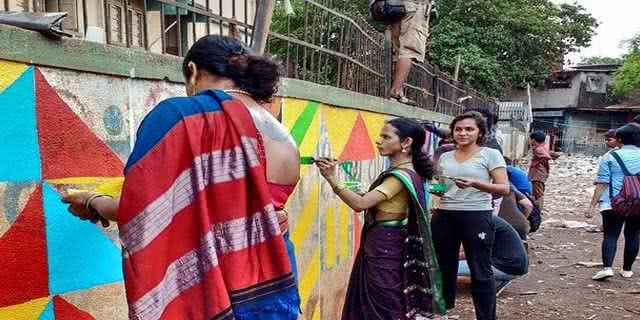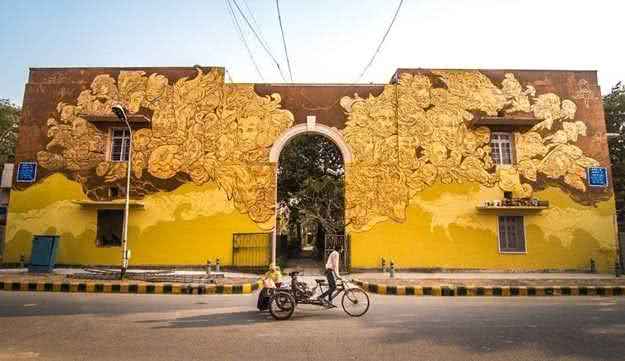Street art is gaining stem in India. Murals are becoming common throughout the world to spread messages and create meanings to the general public. Bangalore, Mumbai and Delhi are some of the cities that are heavily investing in street art to beautify their cities while conveying important messages behind the art. In some instances the public plays an important role in creating the artwork and have a voice behind the art. As the focus of Art India Magazine was street art in their latest issue, I am basing this article on the topics related to that magazine.

In Bangalore, there have recently been temporary murals and street art initiated by The Aravani Art Project where transgender women express themselves by painting murals. These murals make the transgender population feel noticed and spread their message of Naavu Idhevi (‘We Exist’ in Kannada) in relation to the discrimination and abuse they face in today’s Indian society. This initiative has led to controversies around the city as the general public do not accept the transgender population as being a ‘normal’ part of the society. The art they paint might be temporary but the messages they convey last a long time and have an impact on the society. As more transgender people spread messages through art, their appearance becomes known and they become less stigmatized. This suggests that art can be used to display powerful messages and can change lives, even if the artwork is a temporary project.
Aravani Art Project brings communities together to create art: Source
INKBRUSHNME is another organisation that has involved in street art in Bangalore. They painted the Metro building in Bangalore which conveys a sense of belonging and happiness, as the name of the artwork suggests Prescription Happiness. There are also other initiatives around Bangalore MG Road and the CBD area where people can see many wall paintings and art displays that capture the attention of passersby. The Mahatma Gandhi Statue in Vidhana Soudha has also had a lasting impression on the public space surrounding the government building, identifying its significance to the city. These public artworks play an important role in the urban fabric of Bangalore city. Bangalore is still at its nascent stage with public art, however, cities such as Mumbai and Delhi are more well versed with public art.

In this article, the author explored chapel road of Mumbai which the author says “is kind of public art refuge that for some time makes you admire the location if only for a little bit longer.” This can be compared to Melbourne’s Flinders Lane which is dotted with street art at a bigger scale than Mumbai. However, the messages conveyed in India’s street art are different to that of Melbourne and the western cities. Mumbai’s Chapel Road is known to convey messages about India’s movie stars, local vernaculars and topics related to the city. This suggests that the context of the art varies according to the city it is painted in. This is similar to Delhi’s Lodhi Colony which was one of the first public art districts in India in 2016. Since then, more artists are painting on Delhi’s walls and buildings to add more colour and bring about similar influence of street art to India compared to cities such as New York or London which are famous for graffiti and murals.
Lodhi Colony dotted with street art. Source
India has had the tradition of wall painting since many generations, however, they were not regulated or funded by the government. In recent years, the government is investing in city development with wall paintings being an investment towards city beautification. Street art developed in India only a few years ago as a genre. There is a lot of potential for growth in our city’s public spaces for street art. Some of the artists are creating a change in landscape while others are run by organisations who want to make an impact on the city. One of the major influences for street art growth in the world was Banksy, who’s murals of war and destruction convey powerful messages to the public who started to recognise the street art, giving it more credit than it received in the past few decades.
Therefore, street art needs to be acknowledged in India’s public realm, to enhance the city surroundings and give the space a meaning. Art is subjective and depending on the way people interpret the art, it can create a tremendous change for cities. All cities should strive towards this change and encourage city dwellers to notice and participate in street art to create a community and bring people in the city closer to each other.